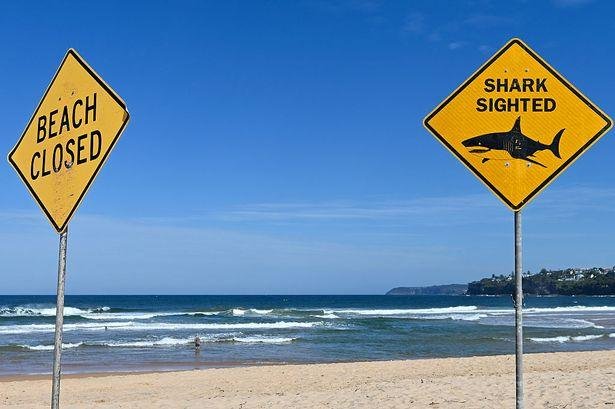Surfer Survives Shark Attack, Drives Himself to Hospital for Emergency Surgery
In a remarkable display of resilience, a man in his 50s managed to drive himself to the hospital after suffering two shark bites while surfing at a popular tourist destination in South Australia. The incident occurred at D’Estrees Bay, an area known for its vibrant marine life and scenic beauty, but also for its potential dangers, particularly from sharks.
The Incident: A Close Encounter with Danger
On Tuesday afternoon, around 1:37 PM local time, the surfer was enjoying the waves when he was attacked by what is believed to be a bronze whaler shark. This species, known for its size and strength, can grow up to 3.3 meters (approximately 10.8 feet) in length and weigh as much as 300 kilograms (about 660 pounds). Eyewitnesses reported that the shark had been seen in the area, reportedly chasing seals, which are a common prey for these formidable predators.
Despite the severity of his injuries, the unnamed surfer demonstrated remarkable fortitude. After being bitten, he managed to paddle back to shore, get into his vehicle, and drive himself to the nearest hospital for emergency surgery. His quick thinking and determination likely played a crucial role in his survival.
Historical Context: Shark Attacks in Australia
Shark attacks are not uncommon in Australia, a country renowned for its stunning coastlines and rich marine biodiversity. According to the Australian Shark Attack File, there were 27 unprovoked shark attacks reported in 2020, making it one of the deadliest years on record. The frequency of these incidents has led to increased public awareness and safety measures, including shark nets and aerial surveillance in popular surfing areas.
In a similar incident in 2020, a surfer named Dion Lynch was attacked by a great white shark in the same vicinity. Lynch described the experience as “like being hit by a truck,” highlighting the sheer force of the encounter. He, too, managed to reach safety despite his injuries, underscoring the dangers that surfers face in these waters.
The Aftermath: Community Response and Safety Measures
Following the recent attack, Shark Watch South Australia issued a statement urging caution among beachgoers. The organization emphasized the importance of being aware of local marine life and the potential risks associated with swimming and surfing in areas known for shark activity. Local authorities have also increased patrols and monitoring in the region to ensure the safety of residents and tourists alike.
The community has rallied around the injured surfer, expressing their relief at his survival and wishing him a swift recovery. Social media platforms have been flooded with messages of support, showcasing the tight-knit nature of the local surfing community.
The Science Behind Shark Behavior
Understanding shark behavior is crucial for both surfers and marine biologists. Sharks are often attracted to areas with abundant food sources, such as schools of fish or seals. The bronze whaler shark, in particular, is known for its inquisitive nature, which can sometimes lead to unintentional encounters with humans.
Experts suggest that many shark attacks occur due to mistaken identity, particularly when surfers are on their boards, which can resemble the silhouette of a seal from below. This phenomenon has led to ongoing research into shark behavior and the development of technologies aimed at reducing the risk of attacks.
Conclusion: A Testament to Human Resilience
The story of the surfer who survived a shark attack and drove himself to the hospital serves as a powerful reminder of human resilience in the face of danger. While the ocean can be a beautiful and exhilarating place, it also harbors risks that require respect and caution. As communities continue to navigate the complexities of living alongside nature, incidents like this highlight the need for ongoing education and safety measures to protect both humans and marine life.
As the surfer recovers from his injuries, his experience will undoubtedly contribute to the ongoing conversation about shark safety and the relationship between humans and the ocean. The incident serves as a stark reminder of the unpredictability of nature and the strength of the human spirit in overcoming adversity.











